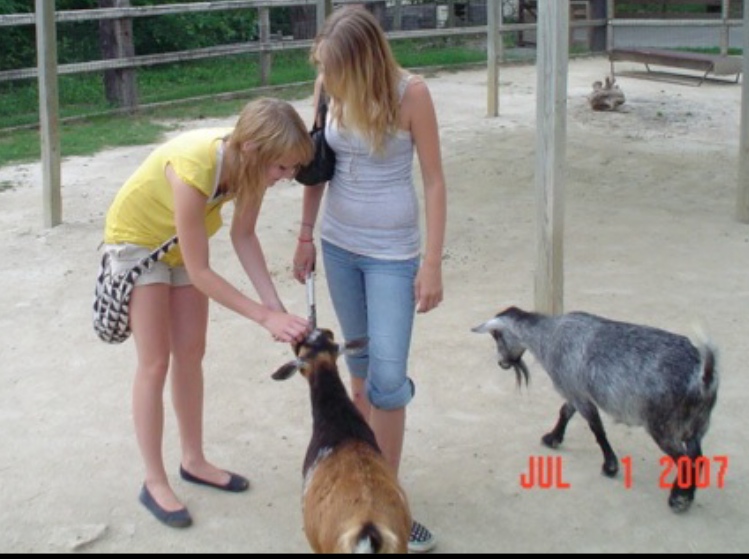The coverage of extension associate Katrina Levine’s research on cookbook food safety messages took an unexpected turn yesterday. Gwyneth Paltrow’s ‘people’ weighed in.
By ‘people’ I think it’s the folks who published her cookbooks.
It started with a string of emails from some folks in the UK who saw the NC State press release about the research. After analyzing 1700+ recipes from cookbooks on the New York Times best seller list we found that safe endpoint temperatures only appeared in just over 8% of the instructions.
Not great.
A few journalists want to know who are the biggest offenders are (quick answer: it’s pretty well everyone we looked at – but not all the time).
One of the books included in our study was Paltrow’s It’s All Good. In a flurry of questions, and without being able to find all the recipes online, I sent one of the enquiring minds a recipe from another book, My Father’s Daughter as an example of what we were looking at, with this note:
“Here’s one from chef Paltrow that does not have a safe endpoint temperature included (165F or 74C).
Heat oven to 400°. Mix butter, garlic salt, paprika, pepper and salt in a bowl. Rinse chicken inside and out; pat dry. Insert fingers between skin and breast to separate the two. Rub seasoned butter over chicken and under skin. Tuck wings underneath bird and tie together with a piece of twine. Tie legs together with another piece of twine. Place chicken on its side in a heavy roasting pan and roast 25 minutes. Turn onto its other side and sprinkle with several tbsp water; roast 25 minutes more. Turn chicken on its back; roast 10 minutes more. Turn on its breast; roast until skin is crispy and chicken is golden brown, 10 minutes more. Remove from pan and let rest, breast side down, 15 minutes, before carving (remove skin).”
The Paltrow folks responded, through the journalist with this:
“The recipe for “Roast Chicken, Rotisserie Style” was published in MY FATHER’S DAUGHTER in April 2011. While it did not have an endpoint temperature included, the directions called for the chicken to be roasted at 400F for 70 minutes, which is ample time to cook a 3-4 pound chicken.
IT’S ALL GOOD, which was published in April 2013, does include endpoint temperatures. “Super-Crispy Roast Chicken” in IT’S ALL GOOD is baked for 1-1/2 hours at 425 degrees and the recipe advises “The chicken thigh should register 165 degrees F on a digital thermometer at the very least (I usually let it get to 180 Degrees F just to be completely sure it’s cooked all the way through the bone).”
So we went back to the data – and yep, we noted that the Super-Crispy Roast Chicken had a safe end point temperature. What they omitted was that the first instruction in the recipe was to wash the chicken; one of the steps that can increase the risk of foodborne illnesses.
There were these other recipes from It’s All Good that don’t have the safe endpoint temperatures (and tell the reader to do non science-based things like touch it, look for clear juices or color to ensure doneness):
The row (I think that’s the correct colloquial British term) made the front page of the Daily Mail (above, exactly as shown).
As for this comment, ‘the directions called for the chicken to be roasted at 400F for 70 minutes, which is ample time to cook a 3-4 pound chicken.’
Maybe, show me the data. Lots of variables that can impact the final temperature – starting temperature of the chicken, thickness, oven heat calibration.
Isn’t it just easier to tell folks what the safe temperature is and tell them to stick it in?
Food and Wine points out exactly what we found. It’s not just Gwyneth.
But for once, let’s cut Paltrow some slack. Out of the whopping 29 best-selling cookbooks these experts analyzed, only nine percent of them included specific temperature information. She’s in good company. Meanwhile, only 89 — 89! — of the 1,497 recipes included in the study were deemed instructionally safe.
Honestly, none of this seems too egregious, and we almost wish Paltrow didn’t have to deal with the PR headache.
Oh well.
 Paul Joseph Watson of Summit writes that a Swedish behavioral scientist has suggested that it may be necessary to turn to cannibalism and start eating humans in order to save the planet.
Paul Joseph Watson of Summit writes that a Swedish behavioral scientist has suggested that it may be necessary to turn to cannibalism and start eating humans in order to save the planet.





 Penguin Group Australia pulped and reprinted about 7,000 copies of "Pasta Bible" after the typographical error was found in the ingredients for spelt tagliatelle with sardines and prosciutto, The Sydney Morning Herald reported Saturday.
Penguin Group Australia pulped and reprinted about 7,000 copies of "Pasta Bible" after the typographical error was found in the ingredients for spelt tagliatelle with sardines and prosciutto, The Sydney Morning Herald reported Saturday. Or NZFSA is following what New South Wales, Australia, did a couple of months ago for a book that has been available since Aug. 2009. Regardless, it seems extraordinary that government agencies are calling people on their food safety bullshit.
Or NZFSA is following what New South Wales, Australia, did a couple of months ago for a book that has been available since Aug. 2009. Regardless, it seems extraordinary that government agencies are calling people on their food safety bullshit.
 Among the highlights:
Among the highlights: Yesterday, she started screaming as loud as she could for about 20 seconds. Sure enough, out popped a poop. That was about the fourth consecutive time it’s happened. Really, who hasn’t wanted to scream during a plugged up poop.
Yesterday, she started screaming as loud as she could for about 20 seconds. Sure enough, out popped a poop. That was about the fourth consecutive time it’s happened. Really, who hasn’t wanted to scream during a plugged up poop.